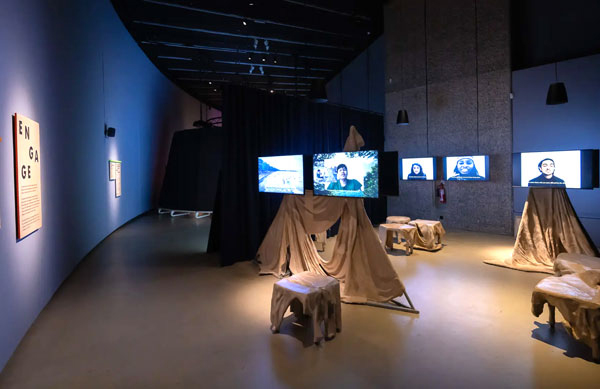Speirs Major’s ‘most sustainable project ever’

TOP lighting design practice Speirs Major challenged itself to create ‘its most sustainable project ever’ when it was tasked with illuminating the latest exhibition at the Barbican Centre in London.
‘Our Time on Earth’ – which showcases creative solutions for climate change – is a temporary exhibition designed to travel for five years after finishing in the Barbican in August.
Speirs Major’s team, led by senior lighting designer Benz Roos, devised four key principles for the project:
- Use as much existing equipment as possible
- Design with a minimal number of luminaires
- Specify light fittings suitable for the circular economy
- Ensure the visitor experience is excellent
‘Circular economic and minimal embodied carbon were crucial principles from the start,’ says Roos. ‘The relatively new Cibse guidelines TM65 and TM66 helped us direct the specification towards circularity and low embodied carbon.’
The team assessed the market and found that the ZTA spotlight from Stoane Lighting was the ‘natural choice’. It has an ‘excellent’ TM66 rating of 2.6 and was the winner of both Build Back Better platinum and green awards in 2011.
Dr Irene Mazzei of Napier University was brought in to assess the overall design data and concluded that the new lighting would have embedded carbon of 2,263 kg.
The drivers alone are responsible for 472 kg of this, or 20 per cent.
‘To put this context,’ says Roos, ’38 seedlings would need to grow into trees for at least 10 years to offset these emissions.’
Roos says Mazzei’s assessment was an ‘eye-opener’ for the team. ‘Until now our studio has always put the experience and the visual effect of the light as the primary focus as concept stage, with the choice of equipment not considered until later in the process,’ says Roos. ‘This relatively small project has allowed us to begin to adjust our approach.’
Pic: Mark Allan Photography/Tim P. Whitby


